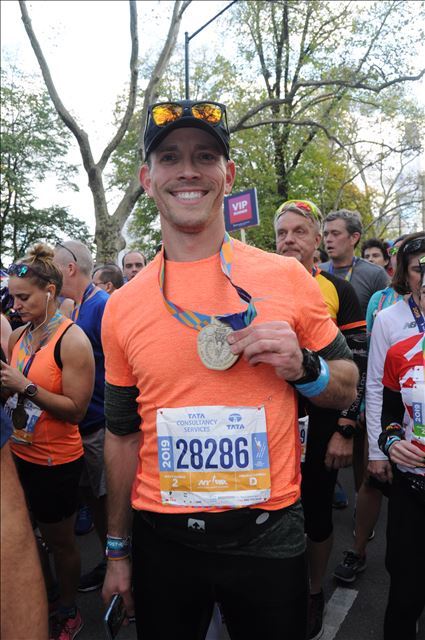How to Set Running Goals
Let’s talk about goals. After getting started and completing a few races, new runners start to wonder just how fast they can run. Experienced runners, meanwhile, are always setting goals and looking for improvement. No matter if you’re new or experienced, here are the methods I use to help athletes set goals.
Time and Pace Barriers
Once you run a few races, the most common method for setting a goal is to try to break the next time barrier. For example, if a runner runs a 10K in 1 hour and 3 minutes, she often sets breaking 1 hour as her goal. If you look at finish times, particularly in the marathon, you’ll see a cluster of runners just under each time barrier: sub 3 hours, sub 4 hours, sub 5 hours, etc. It just seems to be the easiest method for setting a goal when you are close to a nice round number.
However, goal setting doesn’t have to be only about overall time. Some runners focus on pace barriers rather than on overall time. Trying to improve from a 9:38/mile pace to a 9:30/mile pace for a half marathon is a good example. Some runners simply care more about pace than overall time, so their goal is to average a certain pace for a race.
No matter if you use a time barrier or a pace barrier, a lot of runners begin their goal setting with this method, and I tend to like it for newer runners. It keeps them focused on improvement, and achieving the nearest time barrier often comes quickly early in their running journey, which builds motivation for the future.
McMillan Calculator Predictions
As you get more experienced (or if you are not close to a time or pace barrier), you start to get more precise in your goal setting. This is because at first, you take big chunks off your personal best, but as you get more experienced, the improvements come in smaller and smaller increments, so goal setting becomes a bit more difficult.
For these runners, the McMillanRunning.com calculator is a great tool to help set realistic yet challenging goals. One key feature of the calculator is that it predicts your race times at other distances. You simply input a recent race and the calculator creates a chart of your equivalent performances at all other distances (assuming you’re well trained for that distance, of course).

Pretty cool, huh? In one simple tool, you immediately see what you can run right now at other distances in the Current Times column. This is very helpful for setting goals that are coming up soon. For example, if you run a 5K in 26:21 (8:29/mile pace), the calculator predicts a good goal for an upcoming 10K is 54:43 (8:48/mile pace). Having this target pace in mind will help to keep you from starting too fast (most common) or too slow (frustrating after the race) so you get the most from your race. The Current Times feature is particularly valuable for runners who race frequently at various distances, like a summer series of races. Instead of “running blind,” you’ll have a target pace you can use to help get the most from yourself, particularly in race distances that are less familiar (e.g., 4 miles, 15K).
On the flip side, for runners who are getting ready for a big race in three to four months, the Goal Times feature helps you determine if your future goal is reasonable or not. For instance, if you ran 26:21 for 5K in the summer (from our example above) and decided you wanted to run a half-marathon in the fall, you’d see in the Current Times section that your 5K performance equates to a 2:02:00 half-marathon. Using the earlier time/pace barrier method, you’d probably select sub two hours (1:59:59) as your half-marathon goal. But how do you know if you’ll be in that shape by race day? That’s where the Goal Times section of the calculator comes in. If you enter your 1:59:59 half-marathon time into the goal input in the calculator, it provides the equivalent performances at all distances. You’ll then see that the 5K and 10K predictions are 25:55 and 53:49, respectively. You then know that if you can get your 5K and 10K times down to those predictions in the months leading into your half-marathon, you can probably hit your goal. Since most runners compete in “tune-up” races along the way to their goal race, you would simply sign up for one to three 10K races in advance of your half-marathon and work to get your time down to 53:49. This, along with your goal-pace workouts (discussed below), help you know that your goal is doable.
There is no crystal ball, but the McMillanRunning.com calculator has been used by nearly 20 million runners to help them at least get an idea of what is possible.
Externally Set Times
The last method that runners use is by far the easiest way to set a goal, but often the hardest to know if the goal is doable or not. And that is when the goal is externally set for you.
A great example is the BQ—i.e., the Boston Marathon Qualifying time. To decide who gets to run the Boston Marathon, the Boston Athletic Association, who put on the marathon, set qualifying marks for different age groups and genders. If you want to run the race, you must run faster than your qualifying time to get in. As a result, the goal becomes simple: Hit the BQ time.
The hard part of this process is knowing whether or not that goal is doable. Because the BQ is so important to many runners, I added a Can You BQ? calculator to my McMillanRunning.com calculator to help runners see if the goal is reasonable for them or not.
Anytime a runner faces this type of externally set goal time, I refer them to the McMillanRunning.com calculator a lot. By inputting the goal time, we can easily see what times she needs to hit in other races to match the goal time. Then, it’s just a matter of setting up the training (and the racing schedule) to build the fitness she needs. If we’ve trained right for the goal race and the runner has performed near her predicted times for the tune-up races, then we have a shot. As I’ll describe later, it just may take us a few tries to actually hit that externally determined goal time.
Goal-Pace Workout Sequence Tells All
Ultimately, it doesn’t really matter how you feel about your goal at the outset, because your training plan should have a sequence of goal-pace workouts that will help you evaluate whether your goal is doable or not.
I started integrating a goal-pace sequence into my training plans many years ago, because runners always wanted to know if they would be able to hit their goal. Of course, no one can see the future, but I knew that if they could hit their goal pace in longer and more challenging goal-pace workouts across the training plan, then we’d get a really good idea of if the goal was achievable or not.
Over a decade or so, I have refined the sequences for each race distance so that each of my plans has just the right goal-pace challenge at just the right time in the plan. What you find is that the first goal-pace workouts, which are short and should be doable, require a bit more effort than you’d like. This is because the body and mind aren’t quite used to that pace yet, and you haven’t completed the other components of your plan that build your fitness. Then, in the middle of the plan, you really start to nail your goal-pace workouts, and your confidence grows. As you get to the later stages of your plan and the most difficult goal-pace workouts, you find that you now have the physical and, most importantly, mental skills to handle your goal pace.
Runners love this process. When they hit all of the goal-pace workouts in the sequence, they arrive at the race full of confidence and with loads of goal-pace experience. The end result is more often than not a successful day.
On the flip side, the other beauty of the goal-pace sequence is that you can’t cheat it. If you can’t hit your goal paces in the workouts, then there is no miracle that will happen on race day; you simply need to modify your pacing plan so you can have a successful day. Does this stink? Of course, it does. But it is much more rewarding to have a successful race than to try to run an unreasonable pace and fade miserably.
Plus, running is never a one-time affair. You’ll run many races, and it’s likely that in future training plans, you will move toward or even surpass your original goal. You may just require one, two, or three training cycles to get there.
Howie had this experience. His dream was to qualify to run the Boston Marathon. He lived in the Boston area, so it was a really important personal goal. The problem was that, based on his two prior marathons and other race equivalents, he was nowhere close to his qualifying time.
I felt we could get there, but it would take time. With his buy-in, we launched a two-year project to get him to his BQ. We used four training cycles across the two years. In the first, we focused on the half-marathon. I felt like it was his sweet spot in performance and would include a nice variety of workouts that would help him not only in the half-marathon but also in his upcoming marathon training. That cycle went well, and he ended up running 1:35:20. The BQ time he needed to achieve for his age group was 3:15:00, which showed a 1:32:39 half-marathon equivalent in the McMillanRunning.com calculator. While his half-marathon was not yet to that level, it was a PR for him and set him up for the next cycle, where we’d run a marathon. I knew this marathon would not be the BQ attempt, but he’d only completed two marathons before, so I wanted him to get more experience with the training and race distance, all with an eye toward our BQ attempt the following year.
This second cycle also went well, and Howie made another step toward his BQ. For the third training cycle, I had him focus on the 10K. He had developed good strength from the half- and full marathon training cycles, but I knew for the BQ, we needed to be a bit faster. Running faster at shorter distances is often a key step to getting faster at longer distances. Fortunately, Howie took to the training and could draw on his well of strength from the half and marathon training. His 10K time now equated to his BQ time. We were definitely getting an idea that the BQ could happen.
The fourth training cycle was all about the BQ attempt. Howie was faster and stronger from the previous cycles and really exceled in training. The result? You guessed it: The coveted BQ. It may have taken a while, but with a smart approach and step-by-step process, Howie built himself into the runner he needed to be to qualify for the Boston Marathon.
The point of Howie’s story is that goal setting is fluid. Sometimes you have to take a step back and work on something else (like when Howie worked on his 10K) in order to have a new level of fitness to carry into your goal race plan. Done correctly, many goals—some that even seem really crazy at the time—can become a reality.
SPECIAL OFFER
You can now try McMillan training plans for FREE! For a limited time, I’m offering a 14-day free trial of my Peak Performance Bundle(TM). Take a plan for a spin. Kick the tires as they say. If you like it, do nothing and your subscription will start. If you don’t like it, just cancel and you owe nothing. It’s a great way to experience training on what has been called, “The best training system on the planet.”








